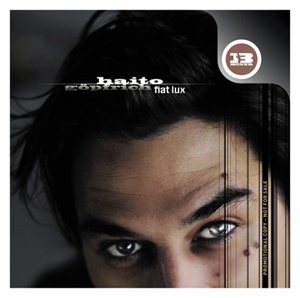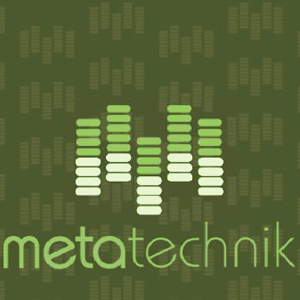Sprint to the Start: Georg Bissen & MetaTechnik Tweak the Licensing Game
MIDTOWN, MANHATTAN: Electronic music is mos def staying strong in the multimedia world — Georg Bissen is making sure of that. As both a notable solo artist and composer/sound designer for NYC’s cutting-edge house MetaTechnik (AT&T, Sierra Mist, Burker King), it’s his job to keep his tasty tastes on top of things.
MetaTechnik’s central role in the current Sprint “Now Network” campaign bears a deeper look. A powerful hybrid label/distribution/publishing/admin play on MetaTechnik’s part was needed to bring the synch license home. Here Bissen dissects the project – and the state of the industry in the process.

Georg Bissen
Q: Nice to be reunited with you, Sir Bissen! Tell us your philosophy on composing for film, TV, commercials video games – you know, things that move.
A: Hmmm. I think it’s multiple things, but first and foremost it is to have a bit of detachment from your art because visuals are involved, and thus clients will constantly ask you to change what you have created.
Second, you have to be able to effectively create a mood that fits to what you see on the screen.
Third is the ability to listen to what clients want. Most people have difficulty talking about music, so to be able to interpret words in a way that translate into an appropriate piece of music is a very important sensibility to have. Lastly, it is to have the skill and talent to write in many styles, moods and genres of music, as every day somebody will ask you to write something different. It goes without saying that the end product has to sound really good.
Q: Smart advice so far. Taking that one step further, what’s MetaTechnik’s own approach to composing and working with clients?
A: Well, I think we take the above-mentioned points very much to heart. And though clients will have final say, it is still important to know when to speak up, and respectfully stand your ground if there is a request you don’t agree with. I believe we at MetaTechnik instill trust in the client, that we are professionals who are up to the job that we get asked to do.
It is very important to understand the value that we, as a music production company, music publisher and sound design and audio mixing facility, bring to the table. First off, our music is unique and original, which means, it won’t be heard on a myriad of other spots, films or TV shows. Second, we value our music enough, that, in most cases, we publish our music ourselves. Third, our music and mixes don’t sound “canned” and sound better than most of the competition—the advantage here being that we produce a ton of records in many genres, so our music-for-picture sounds as professional as a commercial record. Fourth, we’re a one-stop shop and can create any or all of a client’s audio content, from just a VO record, to a full soundtrack, including music, sound effects, mixing and mastering. Lastly, our low overhead allows us to still actually be able to provide extremely high quality audio content for almost any budget, as there are many negotiation options available. That, combined with personal client attention, is what our competitive edge is.
Q: That sounds like a state-of-the-art approach to me, and then some. Let’s talk about the recent Sprint campaign that you told me about. How did your track “Perception” get to be on that package?
A: Just to clarify, it is not actually “our” track, as in we, at MetaTechnik, wrote it. The track was written as a club track by a German DJ/producer colleague and labelmate of mine, Haito Goepfrich. It was first released as a record by one of our label partners Boxer Recordings out of Cologne, Germany. And though we publish that track, we had really nothing to do with picking this specific track for the campaign.

Haito Goepfrich
These days, agency creatives have an amazing array of sources they can pull music from: from CDs or links that companies like ours send them, all the way to MySpace, YouTube, music libraries, local clubs, etc… Sometimes, music shops are not involved in the music-picking process, because so much music is already available at the click of a mouse button. If that is the case, the most important thing is to make sure that the music you represent is in the mix of tracks that are being considered, which was apparently the case here.
In general, though, it can be very beneficial to have professional music writers and suppliers like us involved from the get-go, and it can actually alleviate a lot of frustration. More choices, albeit appearing to be liberating, can actually make it much harder to pick an appropriate piece of music.
I’ve sat in on many music “picking” sessions, and while sometimes there were literally hundreds of tracks online that clients were skimming through, not liking any of them, MetaTechnik has time and time again come to the rescue by offering just a handful of tracks, of which a couple will be precisely what the client is looking for, and one of which eventually gets picked.
Q: I agree – I personally think that “music by the pound” must get tough to wade through. Coming from the opposite tack, why do you think “Perception” works particularly well for Sprint?
A: Well, I think the track suits this client, as the campaign is portraying a futuristic world, full of geeky statistics, with a technologically advanced product, so an electronic, bleepy, smart-sounding track would work very well. As mentioned, it was an artist club track first. We represent quite a few of these electronic artists here in the US, under our Artist Division, and are one of the most forward-looking suppliers of cutting-edge electronic music into the US advertising market.
I think, deliberately or not, this track has become something of a jingle or soundmark for the campaign at this point. In fact, now seeing those grays and yellows and all those statistics without this music would be unthinkable. This perceptively simple track is actually a catchy little number — although, of course, constant exposure plays a big role in this familiarity.
I think the use of this type of track and its huge popularity in the online community, especially after the campaign started airing, is not only a glimpse into what a jingle can be like in the future, but also indicative of where music is headed these days in general. The pop radio airwaves are filled with 4/4 beats, synth patches, and electronic sound manipulation, and the ad world is taking note. I believe this is a sign that electronic music in general is making a huge and sweeping comeback.
(Check out a spot from the campaign here: http://www.youtube.com/watch?v=ImAD8BOBOhw)
Q: That would make moi happy! Can you explain more about the part that MetaTechnik played in the licensing of “Perception”? You said your company played a “dual role”.
A: Right, by “dual role”, I meant that we have our eggs in many different baskets. I am actually an artist on Boxer Recordings, the label that released “Perception.” So, the possibility that my artist tracks may have been chosen for this campaign is relatively high, which is ironic in that the agency may not have asked MetaTechnik, the “music production company”, to custom-write the track for this campaign, if they were looking for “artists.” It just goes to show that perception — pun intended! — can play a big role in what gets picked for music on these campaigns.
Therefore, it is important to play more than one role in this ever-changing business. So, if it’s not my own artist track that gets picked, we can still publish another one and admin it. Thus, in a way, it’s playing a double role, in that we play for both the artist side, as well as for the distribution/publishing/administration side.
In other words, MetaTechnik sits somewhere in the middle of it all, essentially supplying music for both advertising agencies and labels. An artist is usually not also a business, representing the label that he’s on as an artist.
Q: Sounds semi-complicated – but its true that diversifying is essential today, I think even for the most elite artists. Is this how you feel licensing is evolving?
A: Licensing is the future, where synch is concerned. As clients are not so concerned in long-term equity, buyouts are becoming more rare. Licenses are also cheaper than buyouts for the obvious reason that copyright is not transferred. As everyone is trying to save money, licenses have become ubiquitous. Competition for synch licenses has increased because it’s not taboo anymore for artists to be associated with a brand or a film or a TV show, and everyone has tried to get a piece of the pie since record sales have slumped, so basic economics would dictate that prices must come down. But, I do see that we’ve sort of reached bottom, and if anything prices are staying the same or are somewhat inching up.
Q: Wow, some good news! Knock me over with a feather. Switching topics, shed light on what inspires you: What’s another music-to-picture project you can name that you think is particularly well done, and why?
A: I think what inspires me is my environment—nature, life, love, emotions. If it’s a piece of music I get inspired by, it usually has a deep sense of musicality in it.
For my artist and true expression side of things, I tend towards the melancholy, yet uplifting side of things, if that makes sense. One of the most influential pieces of music in my life has been Alban Berg’s Violin Concerto. I wrote a thesis on it in college, and I’m still absolutely blown away by it.
One all-time music-to-picture project that has inspired me over the years is the soundtrack to the German movie “The Princess and the Warrior” [English title]. Music by Reinhold Heil, Johnny Klimek and Tom Tykwer, who also directed the film. It’s a perfect marriage of music and picture, as one doesn’t really notice the music, yet it is so highly expressive and powerful.
Q: OK, we WILL check it out. One last thing — you have a new EP coming out, yes? Tell us about THAT.
A: Hah, it was actually released last week, March 1st! It is a 6-track EP, that spans six mixes from two different tracks. The tracks were the first two record releases I have had, back in 2005/6. The original label went bust, and the tracks were only available on limited vinyl and therefore highly requested. Hence, I reworked and remixed them, also included the classic remixes, and it was just released with another partner label of mine, Eve Records, out in the UK, under the clever name “The Reworks.” It is currently charting in the top 20 on Beatport, which is the main download shop for DJ records. The iTunes release will be on March 15.
Q: Go Georg! We are big fans, so we hope this release does well for you. You’re an international guy – what keeps you in our fair city of NYC?
A: How can there be disadvantages of working and living in the greatest city in the world? I came here after college to make a career out of music, and I did. It is a tough place to start, and a tough place to stay relevant.
But what makes NYC so great is the proximity of labels, agencies, and studios that make our whole industry tick. Everyone is around the corner, to have lunch with, visit or meet. Even though LA may claim they’re the music capital of the world, NYC is just a much better place to live, in my opinion, plus most of the major ad agencies are headquartered here anyhow, which makes it a very great locale to be in indeed.
Q: Soooooo true. On all counts. Anything else to add?
A: Thanks for allowing me to do this interview. Muchly appreciated. I read SonicScoop all the time, so am psyched to be represented myself…
Q: Psyched to have ya. Come on back! Ya hear? — David Weiss






